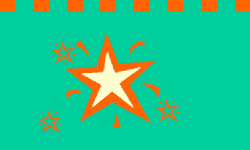CRAZY HORSE’S VISION is Joseph
Bruchac’s version of Crazy Horse’s early life. Bruchac is a writer
of Abenaki Indian descent. Lakota artist S.D. Nelson, a member of the Standing
Rock Sioux tribe, illustrates the book. Bruchac chooses to tell the tale of the
life of young Curly, as Crazy Horse was known in childhood. Bruchac’s writing
is accessible to even younger readers, poetic without being flowery.
From an early age, Curly was different. He was a leader, but one who wanted to help others before himself. Curly tamed his own horse when he was only “eleven winters” old. He shows his skill by taking down a buffalo swiftly and singularly.
Even then, Curly wants to share his bounty with his community. When the
white men move into the area, trouble begins. After Chief Conquering Bear is
killed in a misunderstanding, Curly is shaken and worries for his tribe. He goes
off into the desert to seek a spirit vision. After three days, the vision comes
and shows him as he will be. A voice says, “Keep nothing for yourself.” Year later when Curly speaks with his father about the vision, his father gives Curly
his own name, Tashunka Witco - Crazy Horse. The story ends by telling that Crazy
Horses would go on to bravely defend his people.
Nelson has chosen a style which he
calls “ledger art” in his illustrator’s note. The style arises
from the time when the Native people were forced onto reservations and sent to boarding schools. They were there given ledger books in which they would draw. The
people are shown in profile, with dark outlines. Each profile is very similar. Instead of facial characteristics, Nelson has chosen to show variations in the people
by their unique skin colors and clothing. These colors range from green to yellow
to brown to red to Curly’s blue and many colors in between. Noticeably,
when the white men are shown, they are just that – white. Their hair varies,
but their skin is all one color.
The paintings are acrylic on wood
panels, and the designs that emerge in the land, the sky and even within the bodies of horses and people, are beautiful. Looking into the sky, one can imagine that the see anything that they might look for. During the vision, there are angular spirals in the sky, showing the dreamlike quality
of the moment.
Bruchac and Nelson have succeeded
in creating a book that will pique reader’s interest in the person that was Crazy Horse and what he stood for. The books colorful illustrations will also please and excite even younger readers.

